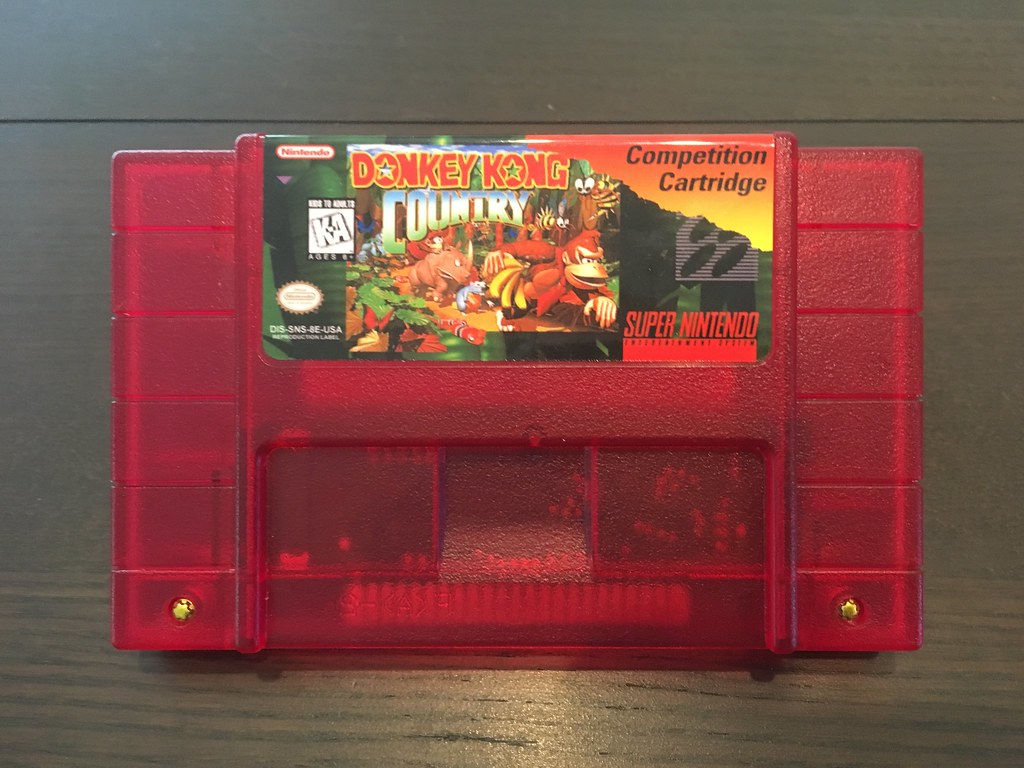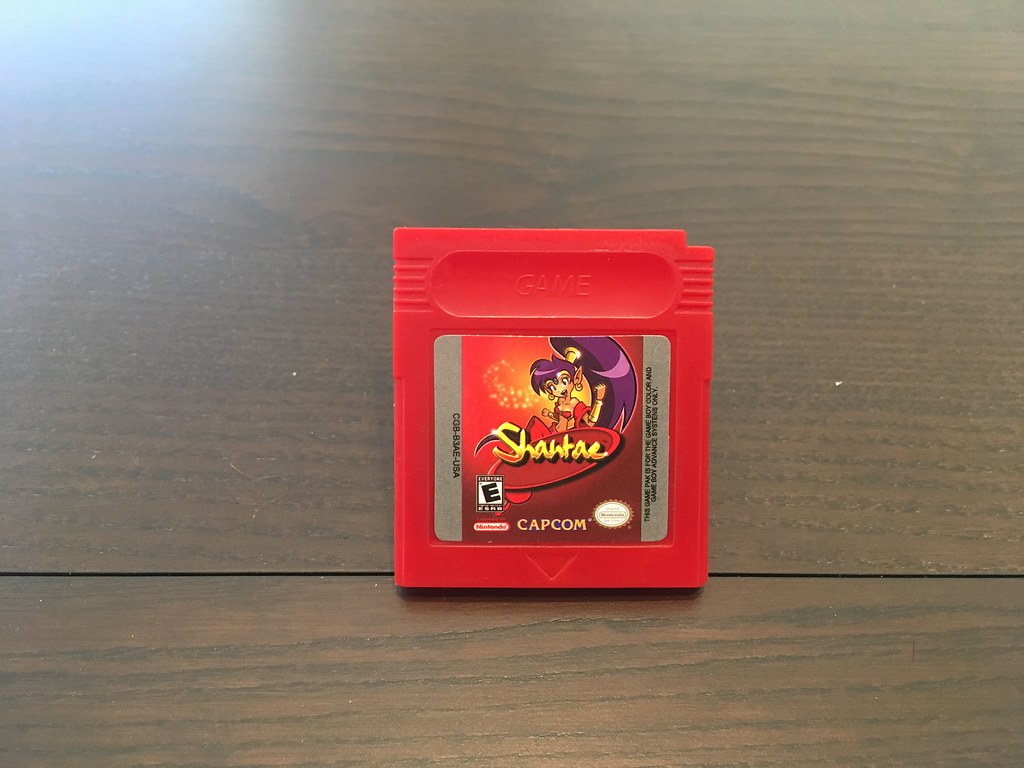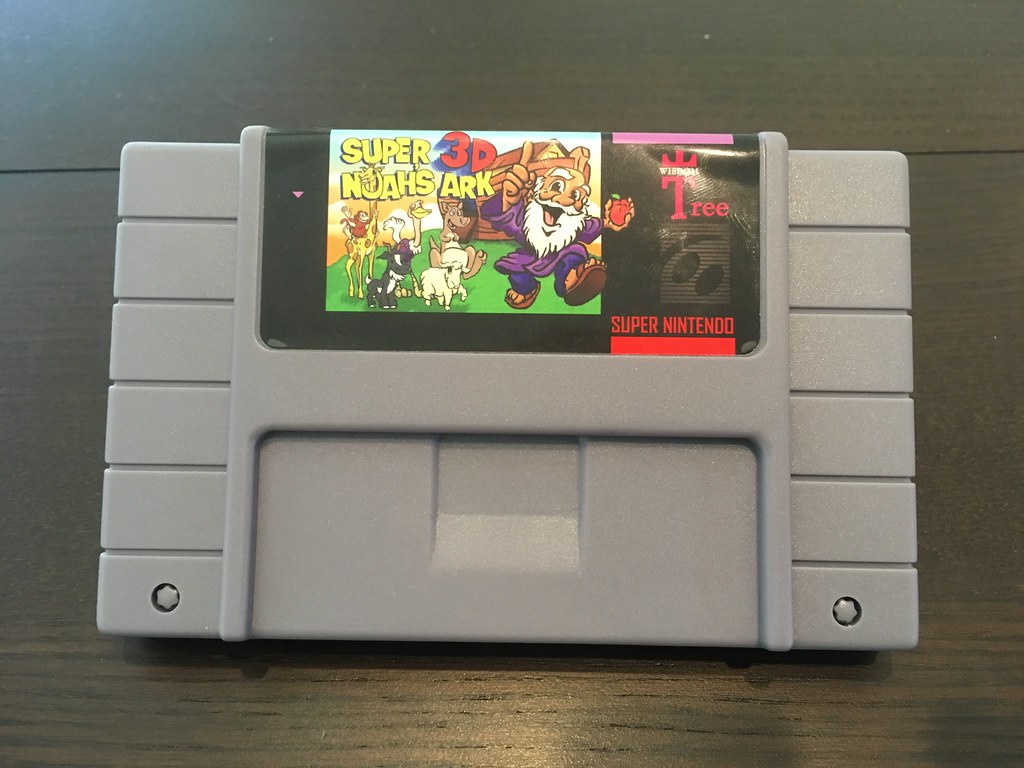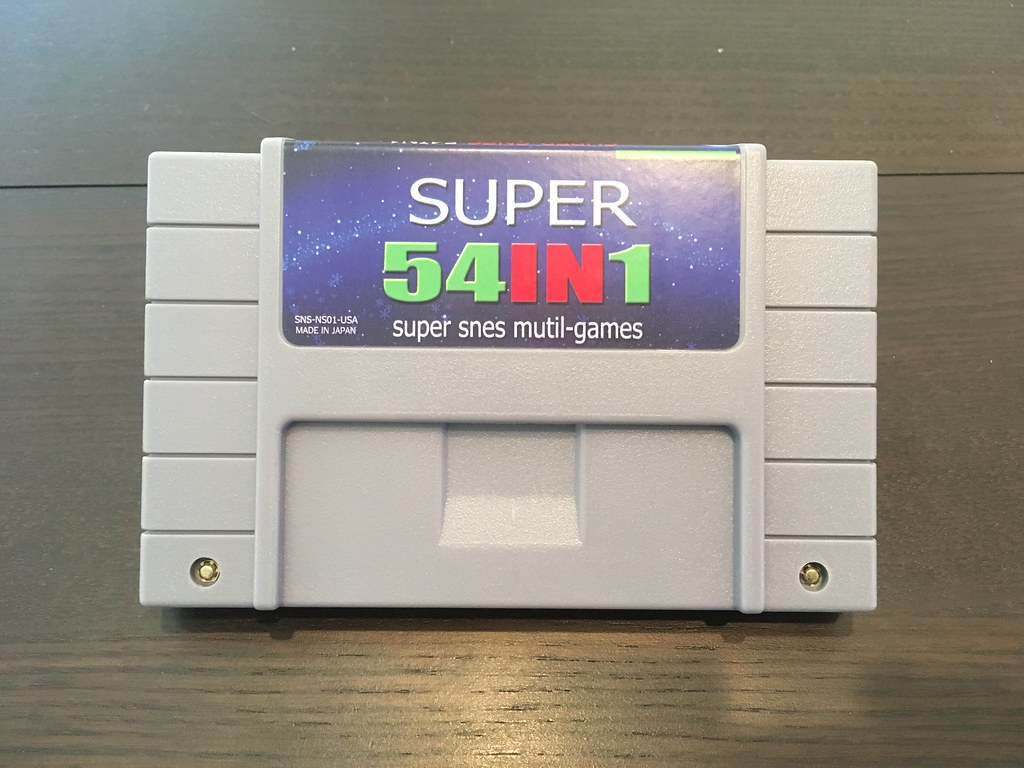Re-Buying My Childhood, Part 3: The Clone Wars
This is a continuation of my Re-Buying My Childhood series. Please see the previous two entries, eBay Does What Nintendon’t and Send in the Clones.
 Ladies and gentlemen, the Donkey Kong Country Competition Cartridge (DKCC).
One of the rarest and most expensive SNES cartridges in history, they now go for around $2000, and I own one.
Look for the distinctive translucent red cartridge…
Ladies and gentlemen, the Donkey Kong Country Competition Cartridge (DKCC).
One of the rarest and most expensive SNES cartridges in history, they now go for around $2000, and I own one.
Look for the distinctive translucent red cartridge…
Nah, I’m just kidding. DKCC is a real game (though in a standard grey case), and it is one of the rarest and most expensive SNES cartridges in trade, but this is a reproduction.
DKCC was used in Powerfest ‘94, and the Blockbuster World Video Game Championships II in 1995. It’s a modification of the standard Donkey Kong Country game, with a number of changes for competitive play. When powered on, it goes directly into the first level rather than the title screen, and when you complete one level it immediately goes on to the next (all levels taken from DKC, but not in the same order). While DKC does not have a scoring system, DKCC does. Each banana or letter you collect, and each enemy you defeat gives you a certain number of points. There is a 5-minute timer, and when the timer runs out, the game simply freezes, so the score may be recorded.
Once the Blockbuster competition was finished, all the cartridges were recalled and sold through Nintendo Power. What makes me interested in DKCC is I personally competed in that Blockbuster competition back in 1995. I actually played one of those original cartridges. (I came in second place in the local store. I was bummed about that for years, until I found out recently that they didn’t have a regional round; they simply invited some of the highest scoring players to a national competition.)
I found a seller on AliExpress (the same who sold the Super Players Entertainment System clone) who offered reproduction cartridges for $18, and ordered DKCC. What arrived was a quite convincing physical reproduction… of the normal Donkey Kong Country, or at least that’s what it said on the label. I was about ready to write to the seller, but tried playing it first. Indeed, the actual game was DKCC, just with a wrong label.
I later found a US seller who produces custom cartridge shells and reproduction labels, though if you look closely, you’ll see he does put “REPRODUCTION LABEL” in the bottom left. I wanted my reproduction copy to look nice and have an accurate label, but at the same time wanted it to be clear this was a reproduction, so I chose a translucent red shell. (And, well, it looks awesome.)
See, there’s a forgery trade out there which makes near-perfect replicas of rare/expensive titles, and I wanted none of that. It makes it harder to verify you have an original (I closely scrutinized my $50 copy of Super Metroid to make sure it was authentic, since it was in suspiciously good condition) and hurts basically everyone. I don’t even know why most people knowingly buy them. I wanted DKCC because of personal nostalgia, but can’t justify paying $2000 for an authentic one. So owning a reproduction is fine, but I want it to be clear it’s a reproduction. Would I want to own a reproduction of, say, Stadium Events for the NES (which goes for over $10,000) if I were a real collector? Nobody wants that for the gameplay or personal nostalgia; only about 10 legitimate copies are known in the wild and it’s literally the same game as World Class Track Meet. I would know it’s fake.
The reproduction PCB itself is interesting. It consists of a MX29GL128ELT2I-90G 128 Mib flash chip, an unmarked QFP chip (presumably a microcontroller), a V62C318256L-35T 256 Kib SRAM chip, and a PIC 12F629 microcontroller (which emulates the SNES lockout chip). And, oddly, a populated CR2032 battery, despite the fact that DKCC has no save functionality. I originally feared that the ROM was stored in a large SRAM area and kept active by the battery, but now I assume the PCBs are assembled en masse (some games need battery backup, some don’t) and then flashed with individual ROMs right before they leave the factory. But I’m not confident enough to test this by pulling the battery.
 Shantae is another rare title, currently going for around $300 on eBay.
Its rarity comes from being an obscure game at the time, released on the Game Boy Color long after the Game Boy Advance had been released, so very few were sold.
I bought a clone of it on AliExpress for a few dollars, mainly because it’s a fun little platformer, not because I have any nostalgic attachment to it (I hadn’t played it until a few years ago on an emulator).
And this clone could never be mistaken for authentic: the label is nice quality, but it’s in a red Game Boy cartridge (not even GBC), with “GAME” where “Nintendo” should be.
Shantae is another rare title, currently going for around $300 on eBay.
Its rarity comes from being an obscure game at the time, released on the Game Boy Color long after the Game Boy Advance had been released, so very few were sold.
I bought a clone of it on AliExpress for a few dollars, mainly because it’s a fun little platformer, not because I have any nostalgic attachment to it (I hadn’t played it until a few years ago on an emulator).
And this clone could never be mistaken for authentic: the label is nice quality, but it’s in a red Game Boy cartridge (not even GBC), with “GAME” where “Nintendo” should be.
 Super 3D Noah’s Ark, a truly biblical Wolfenstein 3D clone.
Literally.
This game was notable for being the only unlicensed game released during the SNES’s original run.
The developer, Wisdom Tree, started as Color Dreams in the 1980s and produced several unlicensed (agnostic) NES games, being able to defeat the NES’s 10NES lockout chip.
Later, the company changed to Wisdom Tree, re-skinned several of its games and re-released them with Christian themes.
Super 3D Noah’s Ark, a truly biblical Wolfenstein 3D clone.
Literally.
This game was notable for being the only unlicensed game released during the SNES’s original run.
The developer, Wisdom Tree, started as Color Dreams in the 1980s and produced several unlicensed (agnostic) NES games, being able to defeat the NES’s 10NES lockout chip.
Later, the company changed to Wisdom Tree, re-skinned several of its games and re-released them with Christian themes.
During the SNES era, its CIC lockout chip had not yet been cracked, but Wisdom Tree figured out how to bypass it, by producing a cartridge which resmbled an SNES Game Genie, with a standard connector on the bottom and a cartridge slot on the top. You plugged the Frankencart into the SNES, then plugged a licensed SNES game into it, and it piggybacked on the licensed cart’s CIC chip, and it was good.
So why would I buy a reproduction of Super 3D Noah’s Ark, 23 years later? Here’s the thing, it’s not actually a reproduction. Here in 2017, I walked to the (proverbial) store and bought a copy from a Wisdom Tree-authorized retailer. Wisdom Tree is still around, and in 2014 it resurrected Super 3D Noah’s Ark, licensing the distribution rights to Piko Interactive, which sells a digital version on Steam, but more importantly, an actual, physical SNES cartridge – albeit a standard grey SNES cartridge, without the need to plug another cart into it.
There’s been a bit of a holy war over the years regarding this game’s title, Super 3D Noah’s Ark or Super Noah’s Ark 3D, one which has not been solved to this day. The game’s logo is ambiguous, and could be interpreted as “Super 3D / Noah’s Ark”, or “Super / Noah’s Ark” with “3D” just placed in the top-right corner. Piko Interactive uses both on its web site, the Steam product page says Super 3D Noah’s Ark, while the spine of the modern cartridge’s label says Super Noah’s Ark 3D.
So again, why would I buy it? I don’t know, it’s interesting to own a new, immaculate copy of an SNES game which is an actual, licensed (just not by Nintendo) release in 2017. Do I need to conceive further reasons?
 The Super Players Entertainment System SNES clone I bought came with a 54-in-1 pirate cart (an actual cartridge as opposed to a built-in pirate ROM on the console).
The physical cart is a perfect SNES cartridge clone, and the cart plays fine on both the clone hardware and the original SNES.
There are no repeats and little shovelware, but I don’t have much interest in the games on it, with very few being repeats of real cartridges I own, and no Mario games.
(I’m guessing they excluded first-party games to avoid Nintendo’s wrath.)
The Super Players Entertainment System SNES clone I bought came with a 54-in-1 pirate cart (an actual cartridge as opposed to a built-in pirate ROM on the console).
The physical cart is a perfect SNES cartridge clone, and the cart plays fine on both the clone hardware and the original SNES.
There are no repeats and little shovelware, but I don’t have much interest in the games on it, with very few being repeats of real cartridges I own, and no Mario games.
(I’m guessing they excluded first-party games to avoid Nintendo’s wrath.)
As I mentioned in my previous post, I’ve got an additional NES top-loader clone console on its way from China. That comes with a 154-in-1 pirate cart, but I don’t expect anything special from that. However, the seller includes a list of titles on the cart, and it’s actually a pretty good list. For example, it contains both Super Mario Bros. 2 and Doki Doki Panic (the original Japanese game which was ported to become SMB2). Oh, and the cartridge is white, not grey, which looks like it’ll be interesting.
Side note: Interesting seeing both 54-in-1 and 154-in-1 cartridges. Both 4 and 5 are considered unlucky in Chinese numerology; 4 can mean “death” and 5 can mean “not” and is unlucky by itself. However, according to Wikipedia, 5 can negate 4 so the number 54 is considered lucky (“not death”).